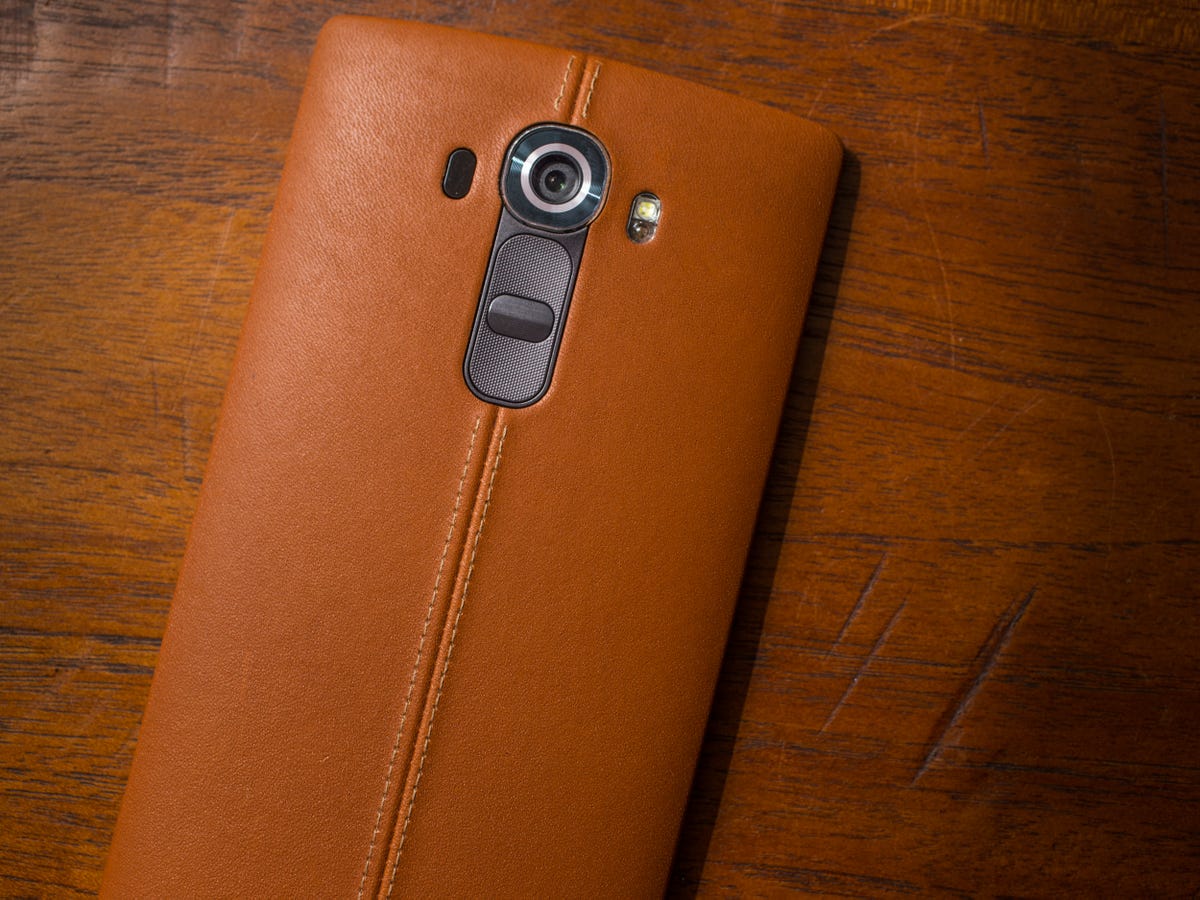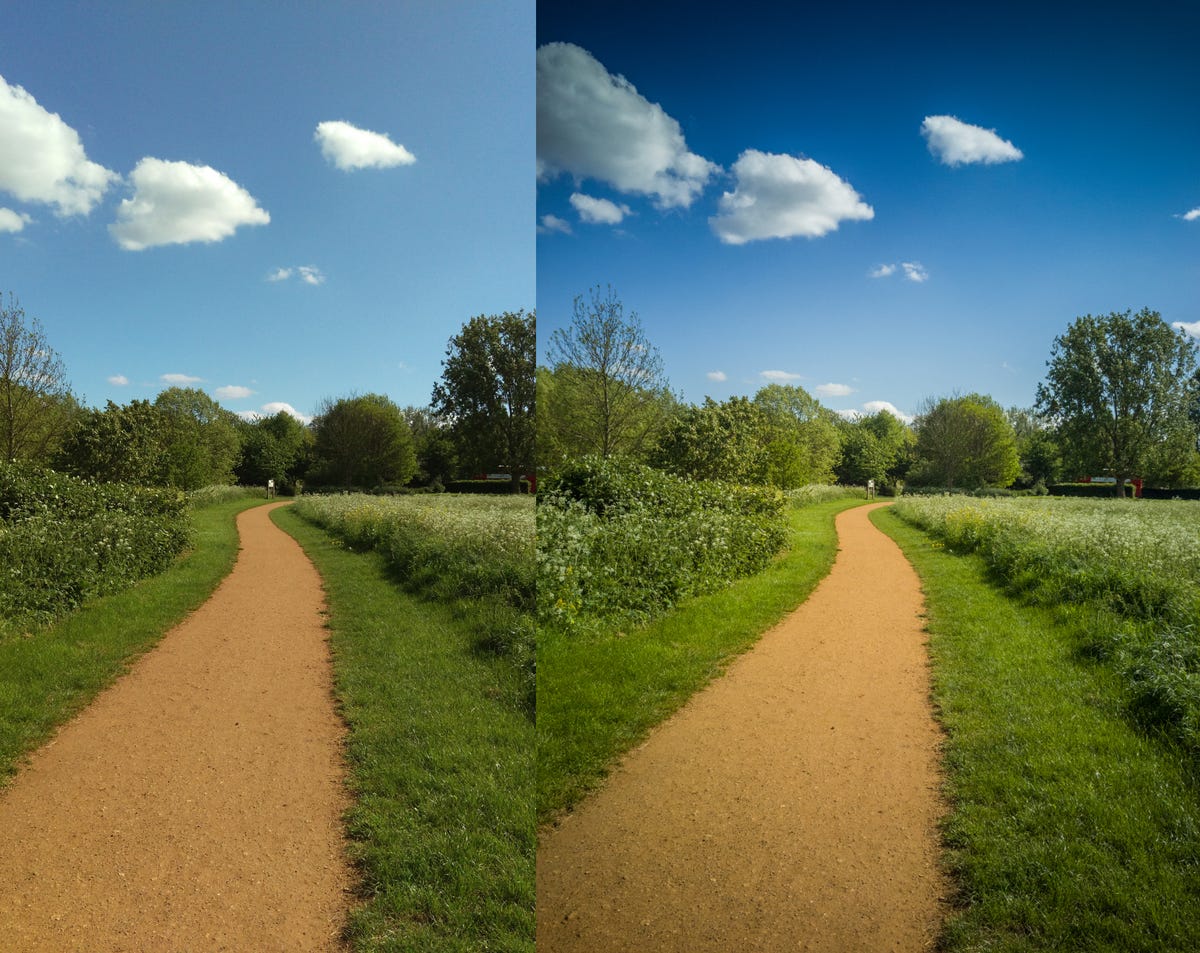
Andrew Hoyle/CNET
Shooting in raw is a term that’s been familiar to digital camera users for several years now, but it’s only recently started to spread out into the world of camera phones. It has various advantages compared to taking photos in JPEG format, but it does require a couple of changes in how you take your photos.
I’ve put together a guide to walk you through everything you need to know about raw shooting on your phone.
What is a raw image?
A raw image file is an image that’s made up of information taken directly from the sensor, without any processing from the camera applied. The image you took will be affected in terms of brightness by shutter speed, aperture and ISO speed, but factors including white balance, noise reduction and sharpening are applied digitally by the camera.
A phone will apply sharpening, colour corrections and noise reduction to a JPEG image and dump any extra image data it thinks it doesn’t need. By contrast, a raw file is completely untouched, preserving all of that extra data.
What is the advantage of a raw image over a JPEG?
Crucially, as a raw file doesn’t save white balance data, you can change the white balance in editing tools such as Adobe Lightroom after you’ve taken the photo. While you can change the colour balance on a JPEG file, doing so essentially involves applying an extra layer of colour over the top of the existing white balance information which was fixed to the photo in the camera — this results in a lower quality image.
The other big advantage is that raw images typically save more data in the brighter and darker areas of a scene than jpegs are capable of doing. In editing then, it’s often possible to tone down highlights in a bright sky on a raw image. On a JPEG however, areas of overexposed brightness don’t contain ‘unseen’ information that can be recovered in editing tools.


Andrew Hoyle/CNET
Does my phone take raw images?
Right now, not many phones are able to take raw images. The list currently includes the new LG G4 and HTC One M9, which can take raw images using the built-in camera app. Raw support is built into Android Lollipop however, so most phones running this software, theoretically, should be able to shoot in raw. You could expect most of the flagship phones (including the Galaxy S6) to support raw at some point in the future, and the next generation of Android phones should support raw too.
At the time of writing, raw shooting is not an option on the iPhone, although whether an update is rolled out in the upcoming iOS 9 remains to be seen. It’s worth noting however, that Windows Phone devices such as the photo-focussed Lumia 1020 and the flagship Lumia 935 have had raw support for a while.
This article will be amended as and when more phones gain raw format support, so check back periodically to see if your handset gets an update.
Related links:
- Samsung Galaxy S6 vs. HTC One M9, Apple iPhone 6 camera shootout
- HTC One M9: A gorgeous phone with a touch of déjà vu
- LG G4: This powerful, fast beauty takes too few chances
- Check out the LG G4’s impressive camera tests
Do I take a raw photo in the same way I take a JPEG?
Not quite. On both the LG G4 and HTC One M9, raw imaging is baked into the stock camera app, but you’ll need to put the phones into manual mode in order to unlock it. That means you’ll have to take control over all the settings yourself to get the picture looking its best, and functions like HDR and panorama are out of the question.
Can I edit and process the image on my phone?
No. At the time of writing, very few Android apps allow you to edit raw images. Instead, you’ll have to transfer them to your computer and use tools like Lightroom or free alternatives like GIMP. That’s probably for the best though, as a larger screen is useful for the fine control you’ll need over white balance, shadows and highlights.
It’s likely however that as more phones start taking photos in raw format, top-name apps like Snapseed, Adobe Photoshop Express and even Instagram will start to let you edit raw files on your phone.
Should I always take photos in raw format?
That’s probably not a good idea. For one, it’s more time consuming to take a photo in raw using manual mode than in JPEG on auto mode. The G4 can already take great photos in auto, so there’s no real need to leave that setting. However, if you’re taking your time over a particularly arty shot and want to get the highest image quality possible, it is worth the switch — see the image below, where I used a long shutter speed and made various processing tweaks in Lightroom to make the image look its best.


Andrew Hoyle/CNET
As you can’t edit the files on your phone, it’ll also mean you can’t process and share your photos until you get home, upload them to your computer and tweak the settings. It’s also definitely worth keeping in mind that a raw file is much larger than a JPEG as they save so much extra information. A raw file on the M9 is around 40mb — ten times larger than a JPEG equivalent, so unless you’ve got endless storage space on your phone, JPEG files will be the better option.
Will raw images make Android camera phones better?
Yes and no. As raw photos strip out the processing done by the phone’s software, we can see what the camera hardware is physically capable of. In the HTC One M9’s case, I much prefer the raw file (and how I can process it) than the JPEG, which has unpleasant amounts of noise reduction and colour correction. What it’s shown is that the software on phones needs to improve.
However, while raw is a good step to improving overall image quality, its time-consuming nature and big file sizes means it’s not a viable option for everyday shooting. Plus, phone manufacturers aren’t likely to ditch their own processing software altogether, so you’ll still be at the mercy of their auto modes for most of the time. We should still be holding companies like HTC to account for their poor image processing software on their phones.
Will raw photos on a phone mean I don’t need my digital camera?
No. There are still massive differences in the hardware between your phone and camera. Physically larger image sensors, brighter, higher quality lenses and more powerful image processors mean dedicated digital cameras are still capable of producing significantly better results.



